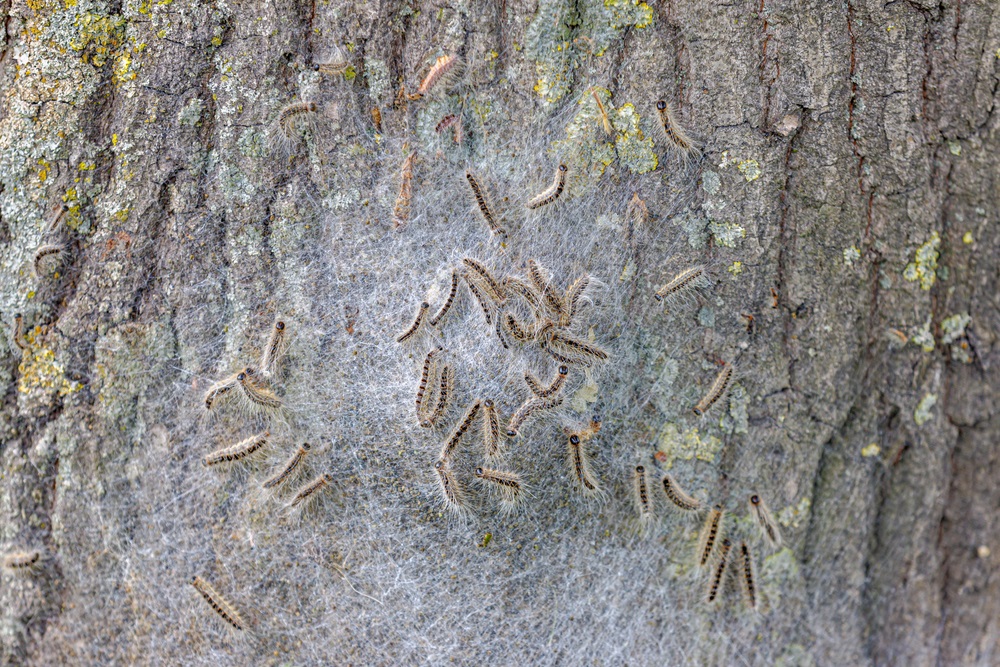Now that the itchy season is over, it seems that the health problems caused by the oak processionary caterpillar were not too severe this year.
‘We haven’t had the kind of peak in reports of trouble that we had last year,’ says WUR ecologist Joop Spijker of the Oak Processionary Caterpillar Expertise Centre. But he is reserving judgement on what that means. ‘It suggests fewer people have had problems, but it could be related to coronavirus, causing people to hesitate to go to their GP.’
Attention
It is not clear how many of the ailments reported to GPs can be put down to the caterpillar. ‘In 2019, there was a peak in reports of skin irritation to GPs. But you don’t know for sure whether it has anything to do with caterpillars. GPs don’t record whether a case was caused by caterpillars.’
Spijker also points out that the media paid more attention to the caterpillars last year than this year. ‘That automatically leads to more reports.’
There were fewer nests and they were smaller than last year
Joop Spijker, Oak Processionary Caterpillar Expertise Centre
Whatever the case, the ‘pest pressure’ is quite a bit lower this year, as was already clear from the monitoring of nearly 10 oaks that were not treated preventively. Last year, half of these trees were infested with oak processionary caterpillars, and this year only one third. ‘There were fewer nests and the nests were also smaller than last year,’ says Spijker. ‘There are regional differences, though. The pest pressure was high in south-east Drenthe.’
In the nests, the researchers also found support troops in the form of some natural enemies of the caterpillar. ‘Certain beetles and parasitic flies that lay their eggs in caterpillars and larvae, which are then eaten from the inside out.’ This help ensures that fewer butterflies hatch and go on to deposit clusters of eggs in the trees. And lastly, Spijker points out the efforts made by many landscape managers to get the caterpillar under control.
Pheromone traps
Overall, the impression is that there were fewer caterpillars this year. Whether this trend will continue will be apparent in the coming weeks when the caterpillars hatch into new butterflies. The new generation will be documented using pheromone traps. ‘We capture the male butterflies in those traps,’ explains Spijker. ‘The assumption is that the number of males keeps pace with the number of females and therefore with the number of eggs laid.’
The traps, of which there are hundreds around the countryside, are set three times during the flight season: at the end of July, mid-August and at the beginning of September. The number of butterflies not only reflects the number of caterpillars this year, but is also an indication of the scale of the problem next year. So the drop in numbers this year could be roughly deduced from the trap yield of last year, which was a lot lower than that of 2018.

 Photo: Shutterstock
Photo: Shutterstock